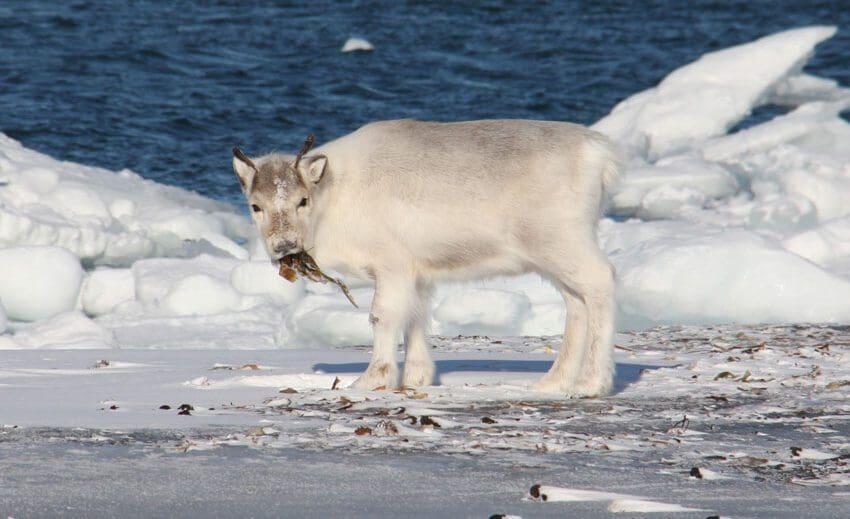Svalbard reindeer graze on seaweed in tough winters

Top image: Reindeer feeding on washed‐ashore seaweed and kelp in late winter. Photo: ©Malin Daase.
A new study reveals that the Svalbard reindeer turn to alternative food sources in tough winters, when the tundra get glazed over by ice. New research shows that the reindeer find alternative food along the shoreline, in form of kelp and seaweed.
25 April 2019
The rapid warming of the Arctic may not only alter species’ population, but likely also the trophic interactions within and between ecosystems. Over the past decade the Svalbard winters have had frequent spells of warm weather, resulting in short, but intensive bursts of rain. This rain on snow has resulted in the tundra being glazed over by ice, thus making it difficult for the reindeer to reach the vegetation on the ground.
Deprived of access to their favorite food, reindeer then turn to alternative food sources – along the shoreline. Kelp and seaweed are abundant at the shore. The new study by scientists from the Norwegian University of Science and Technology, UNIS, University of Alaska Anchorage, Aarhus University and the Norwegian Polar Institute, show that the Svalbard reindeer turn maritime when winter foraging conditions get tough.
Based on annual population surveys in late winters 2006–2015, the proportion of individual reindeer feeding along the shoreline increased the icier the winter. Stable isotope values of plants, washed‐ashore kelp, and fresh reindeer feces collected along coast‐inland gradients, confirmed the ingestion of marine biomass by the reindeer in the shoreline habitat.
Reference:
Brage Bremset Hansen, Jon Runar Lorentzen, Jeffrey M. Welker, Øystein Varpe, Ronny Aanes, Larissa Beumer and Åshild Ønvik Pedersen: Reindeer turning maritime: Ice‐locked tundra triggers changes in dietary niche utilization. Ecosphere. https://esajournals.onlinelibrary.wiley.com/doi/abs/10.1002/ecs2.2672